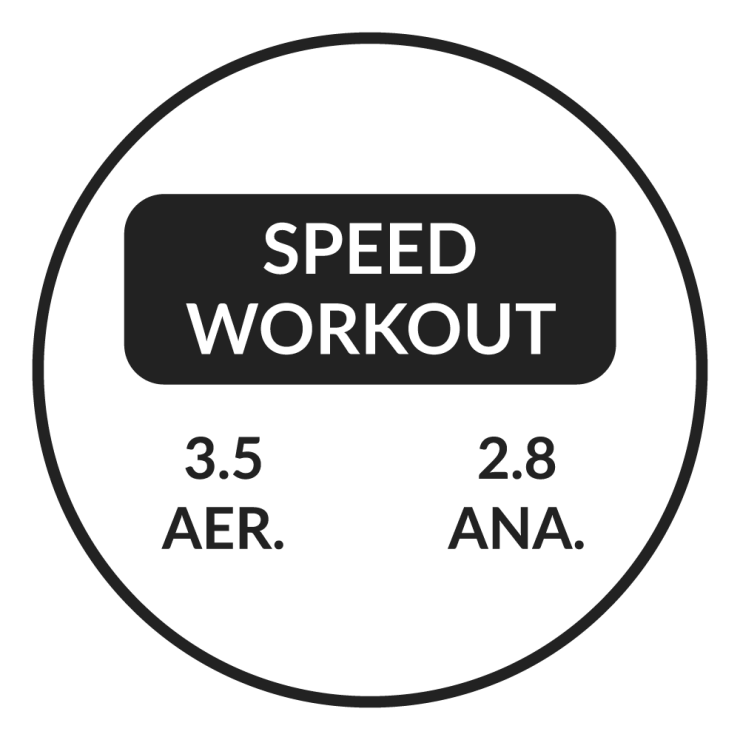Workout Labels
Connect workouts with their primary benefits.
What Is Workout Labels?
Everyone knows that different workouts produce different results, but how a particular workout develops future abilities can be something of a mystery. Workout labels reveal the primary benefit you can expect from your activity.
You can clearly and easily see whether the efforts behind your activity contributed more towards improving your endurance base, your aerobic performance capacity, or the ability to repeatedly perform explosive efforts, recover quickly, and go again. All of which are common elements across many popular coaching models.
- Learn about the relationship between effort and results
- Confirm your efforts match what you want to achieve
- Identify workout types for coaching programs

How Does It Work?
Workout Labels are revealed at the end of your activity, typically on the activity summary screen. The feedback you get is produced by analyzing how your EPOC-based training load accumulated over the course of your activity. This involves recognizing the differences between high- and low-intensity segments that are sustained and interpreting the meaning behind dynamic changes in intensity.
While Workout Labels are revealed at the end of your activity, you can use real-time feedback from Aerobic and Anaerobic Training Effect to guide your efforts along the way.
Recovery workouts are typically shorter, lower-intensity efforts that promote recovery. Base building workouts enhance endurance and involve longer, low-intensity efforts at what many refer to as a conversational pace. Tempo workouts have a large load contribution from sustained moderate- to high-intensity efforts identified roughly as marathon pace. Workouts that improve your VO2max and Lactate Threshold can be sustained steady-state efforts or longer intervals with labels applied based on the relationship between detected intensity and the triggering of capacity development. Anaerobic capacity and Speed improving workouts are recognized through identifying substantial and repeated flurries of very high-intensity efforts, like those commonly associated with speed interval training, high-intensity interval training (HIIT), and sports performance.
The following table gives some examples of various workouts and their expected Labels.
| Label | Workout | Aerobic Training Effect | Anaerobic Training Effect | |
|---|---|---|---|---|
| Aerobic Low | Recovery | Short easy | 1.0-2.5 Recovery/Maintaining Aerobic Fitness | <1.0 No Anaerobic Benefit |
| Base | Moderate steady pace 60 min | 2.5-3.5 Maintaining/Improving Aerobic Base | <2.0 Minor Anaerobic Benefit | |
| Base | Long slow distance, 1-3h or more | 2.5-5.0 Maintaining/Overreaching Aerobic Endurance | <2.0 Minor Anaerobic Benefit | |
| Aerobic High | Tempo | 60 min at marathon pace | 3.5-4.0 Improving/Highly Improving Aerobic Fitness | <2.0 Minor Anaerobic Benefit |
| Threshold | Steady pace close to lactate threshold for 20-60 min | >3.0 Improving Lactate Threshold | <2.0 Minor Anaerobic Benefit | |
| Threshold | Intervals near lactate threshold 6 x 6min / 2-3min recovery | >3.0 Improving Lactate Threshold | <3.0 Maintaining Anaerobic Fitness | |
| VO2max | Intervals above lactate threshold 5 x 4min / 2-3min recovery | >3.0 Improving VOmax | <3.0 Maintaining Anaerobic Fitness | |
| VO2max | 5K & 10K run race | >3.5 Improving VOmax | <2.0 Minor Anaerobic Benefit | |
| Anaerobic | Speed | Speed training 10 x 50m x 150-200%VO2max / 3min | <2.0 Minor Aerobic Effect | 2.0-2.9 Maintaining Speed |
| Anaerobic | Extensive intervals 15 x 200m at 105-115%VO2max / 1min active jogging | >3.0 Improving Aerobic Fitness | >3.0 Improving Economy and Anaerobic Fitness | |
| Anaerobic | Intensive intervals 8 x 1min at 120-130%VO2max / 4min | <4.0 Improving Aerobic Fitness | >4.0 Highly Improving Anaerobic Fitness | |
| Anaerobic | 800m run race | >2.0 Maintaining Aerobic Fitness | >2.5 Maintaining/Improving Anaerobic Fitness |